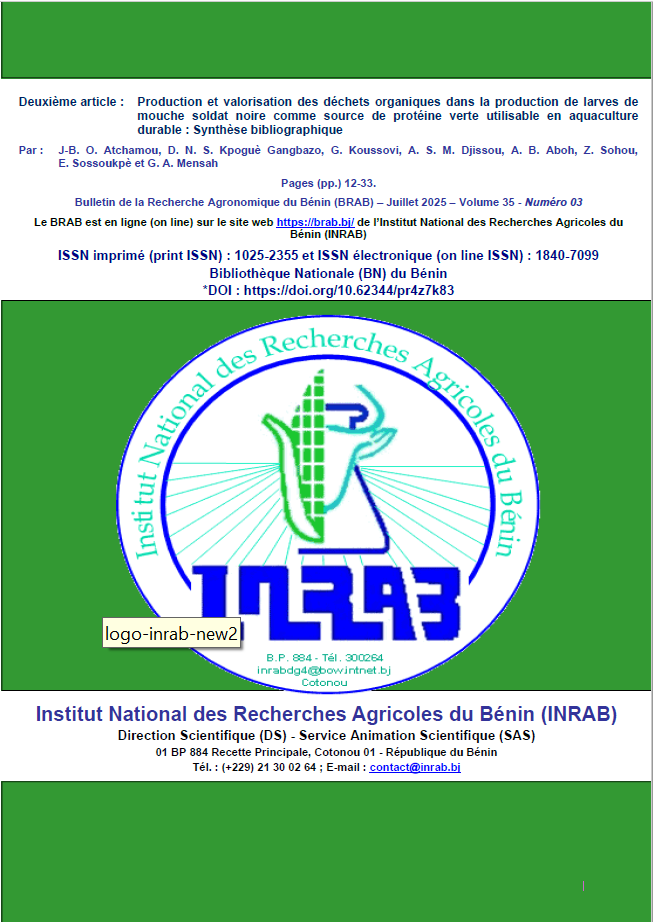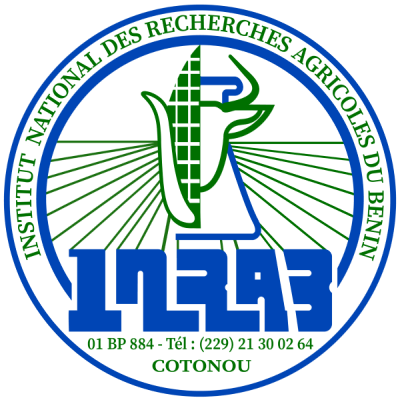Production and valorization of organic waste in the production of black soldier fly larvae as a source of green protein for sustainable aquaculture : Literature review
DOI:
https://doi.org/10.62344/pr4z7k83Keywords:
Maggots, production industry, production challenges, health risk, circular economyAbstract
The black soldier fly has long been a little-known insect. Its popularity has exploded in recent years, however, because it represents a source of digestible protein particularly well balanced in essential amino acids and unsaturated fatty acids. It is therefore highly prized by manufacturers of feed for animal and fish production. The aim of the study was to review the current state of knowledge on black soldier fly (BSF) larvae production techniques. The study was based on the collection and exploitation of scientific documents available online using Google scholar, Scopus, PubMed and Sitographie search engines. The inclusion criteria for documents were those published in French or English and containing keywords related to the study of them. A total of 162 scientific articles and documents were consulted, but 107 were used, and 51 sitographies were consulted, but 33 were used.. Important keywords included black soldier fly larvae, aquaculture, live fish feed, BSFL production industries, agri-food and agricultural by-products, BSFL production substrates, BSFL use, health risk, circular economy. The research works were focused on presentation of the species, its area of distribution, its development cycle, rearing techniques, substrates for its production, its use in animal and fish feed, the challenges associated with its production, societal acceptance of its use, health risks associated with its production and use, methods of treating BSFL before use, etc. The use of black soldier fly maggots can revolutionize aquaculture and agriculture, while protecting the environment.

Published
Issue
Section
License
Copyright (c) 2025 Bulletin de la Recherche Agronomique du Bénin

This work is licensed under a Creative Commons Attribution-NoDerivatives 4.0 International License.
Les articles publiés par le Bulletin de la Recherche Agronomique du Bénin sont en libre accès. Ils sont gratuits pour tout le monde, immédiatement téléchargeables dès la publication et distribués sous la licence CC BY-NC-ND (https://creativecommons.org/licenses/by-nc-nd/4.0/).







